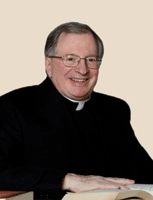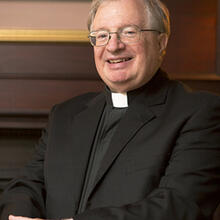For the better part of two weeks last month, I found myself engaged in ecumenical and interreligious dialogue. At the University of Notre Dame, I participated in the fourth annual Mennonite-Catholic Theological Colloquium, where theologians from both communities evaluated Called Together to Be Peacemakers, the 2004 report of the International Catholic-Mennonite Dialogue. Theologians on both sides explored how to build new bridges. Some pressed those responsible for the dialogue to move still further, while others reminded everyone that some differences will not be easily overcome.
There was considerable disappointment on the Mennonite side that Catholics have done relatively little to make Called Together better known. (An abridged version with discussion questions is available for parish and congregational use from Pandora Press, Waterloo, Ont.) Peace activists on both sides pressed hard against the just war theory and the failure of the U.S. bishops to condemn the war in Iraq once it had begun.
Gerald Schlabach, a professor at St. Thomas Seminary in St. Paul, Minn., who recently became a Catholic, embodied this ecumenical spirit in making a strong case for a cause he has been promoting for a few years: a Mennonite order in the Catholic Church. One can think of precedents. The Anglican Usage, for example, is the celebration of much of the Anglican liturgy by former Anglican parishes that have accepted communion with Rome.
The limits of formal, high-level dialogue and the consequent need for mid-level gatherings, like the colloquium, and grass-roots ecumenism like Bridgefolk, a North American Catholic-Mennonite encounter, were also evident as I listened to presentations and audience discussion. For some participants displayed a perfectionism that wished for more than an institutional dialogue can reasonably deliver on short order after 500 years of estrangement.
Before and after my days at Notre Dame, I met with Jesuits from around the world who are engaged in interfaith dialogue. First, at Fordham University in New York, we gathered as Jesuits in Dialogue With Jews; then at Georgetown University in Washington as Jesuits Working Among Jews and Muslims.
In New York, we were joined by both Jewish interlocutors and Catholic lay colleagues. Jewish contributors like Rabbi Harold Hirsch from Regis University in Denver and Professor Harold Kasimow from Grinnell University in Iowa showed enormous appreciation for the teaching and initiatives of Pope John Paul II. One could sense as they spoke just how much John Paul’s commitment to Catholic-Jewish relations had achieved. During a tour of Jewish New York, the hazan or cantor at the Portuguese Synagogue on Central Park West, the oldest in the United States, educated us not only on early American Jewish history but on the various liturgical styles of western Sephardism, singing for us the very different melodies used in Amsterdam, Hamburg and Venice, the other cities where the Portuguese Jewish diaspora had taken refuge.
Among the formal papers were studies of anti-Semitism in the Spanish conquista of the Americas and of the exclusion of conversos (Jewish converts and their descendants) from the Jesuit order beginning in the late 16th century. James Bernauer, S.J., of Boston College reported on Jesuits named among “the righteous” by Yad Vashem, the Israeli Holocaust Memorial, for saving Jews from extermination.
In Washington we explored Ignatian themes informing our interreligious involvements. These included the early Jesuits’ desire to live and work among Muslims (whom they called infidels) and the praesupponendum of the Spiritual Exercises, a disposition on entering into dialogue to give a generous interpretation to the statements of others—in other words, not to presume a negative or hostile meaning in their words.
It is sobering to remember that Jesuit dialogue with Muslims began with a mule. As a new convert, St. Ignatius Loyola encountered a Muslim who he believed had insulted the Virgin Mary. Angered, Iñigo wanted to follow and throttle the Moor. Hesitating at the prospect of committing violence, he left the problem for his mule to decide. It took a trail that led away from the alleged blasphemer, averted a fight and so inaugurated a line of faith-filled openness to others.








